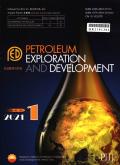Development technologies and models of different types of gas reservoirs in Ordos Basin, NW China
IF 8
Q1 ENERGY & FUELS
引用次数: 0
Abstract
This study systematically reviews the development history and key technological breakthroughs of large gas fields in the Ordos Basin, and summarizes the development models of three gas reservoir types, low-permeability carbonate, low-permeability sandstone and tight sandstone, as well as the progress in deep coal-rock gas development. The current challenges and future development directions are also discussed. Mature development models have been formed for the three representative types of gas reservoirs in the Ordos Basin: (1) Low-permeability carbonate reservoir development model featuring groove fine-scale characterization and three-dimensional vertical succession between Upper and Lower Paleozoic formations. (2) Low-permeability sandstone reservoir development model emphasizing horizontal well pressure-depletion production and vertical well pressure-controlled production. (3) Tight sandstone gas reservoir development model focusing on single-well productivity enhancement and well placement optimization. In deep coal-rock gas development, significant progress has been achieved in reservoir evaluation, sweet spot prediction, and geosteering of horizontal wells. The three types of reservoirs have entered the mid-to-late stages of the development, when the main challenge lies in accurately characterizing residual gas, evaluating secondary gas-bearing layers, and developing precise potential-tapping strategies. In contrast, for the early-stage development of deep coal-rock gas, continuous technological upgrades and cost reduction are essential to achieving economically viable large-scale development. Four key directions of future research and technological breakthroughs are proposed: (1) Utilizing dual-porosity (fracture-matrix) modeling techniques in low-permeability carbonate reservoirs to delineate the volume and distribution of remaining gas in secondary pay zones, supporting well pattern optimization and production enhancement of existing wells. (2) Integrating well-log and seismic data to characterize reservoir spatial distribution of successive strata, enhancing drilling success rates in low-permeability sandstone reservoirs. (3) Utilizing the advantages of horizontal wells to penetrate effective reservoirs laterally, achieving meter-scale quantification of small-scale single sand bodies in tight gas reservoirs, and applying high-resolution 3D geological models to clarify the distribution of remaining gas and guide well placement optimization. (4) Further strengthening the evaluation of deep coal-rock gas in terms of resource potential, well type and pattern, reservoir stimulation, single-well performance, and economic viability.
鄂尔多斯盆地不同类型气藏开发技术与模式
系统回顾了鄂尔多斯盆地大气田的开发历程和关键技术突破,总结了低渗透碳酸盐岩、低渗透砂岩和致密砂岩三种气藏类型的开发模式,以及深部煤岩天然气开发进展。讨论了当前面临的挑战和未来的发展方向。鄂尔多斯盆地具有代表性的3类气藏已形成成熟的开发模式:(1)以沟槽精细尺度表征、上下古生界三维垂向序列为特征的低渗透碳酸盐岩储层开发模式。(2)以水平井压降开采、直井压控开采为主的低渗透砂岩油藏开发模式。(3)以单井产能提高和井位优化为重点的致密砂岩气藏开发模式。深层煤岩气开发在储层评价、甜点预测、水平井地质导向等方面取得了重大进展。三种类型储层均已进入中后期开发阶段,当前面临的主要挑战是如何准确识别残余气特征、评价次生含气层、制定精准的出潜策略。相比之下,对于深部煤岩气的早期开发,要实现经济上可行的大规模开发,必须不断进行技术升级和降低成本。提出了今后研究和技术突破的四个重点方向:(1)利用低渗透碳酸盐岩储层双孔隙度(缝基质)建模技术,圈定二次产层剩余气体积和分布,支持现有井优化井网和增产;(2)综合测井和地震资料,刻画连续地层储层空间分布特征,提高低渗透砂岩储层钻井成功率。(3)利用水平井优势横向穿透有效储层,实现致密气藏小尺度单砂体的米尺度量化,应用高分辨率三维地质模型明确剩余气分布,指导配井优化。(4)进一步加强深部煤岩气资源潜力评价、井型网型评价、储层改造评价、单井动态评价和经济可行性评价。
本文章由计算机程序翻译,如有差异,请以英文原文为准。
求助全文
约1分钟内获得全文
求助全文

 求助内容:
求助内容: 应助结果提醒方式:
应助结果提醒方式:


